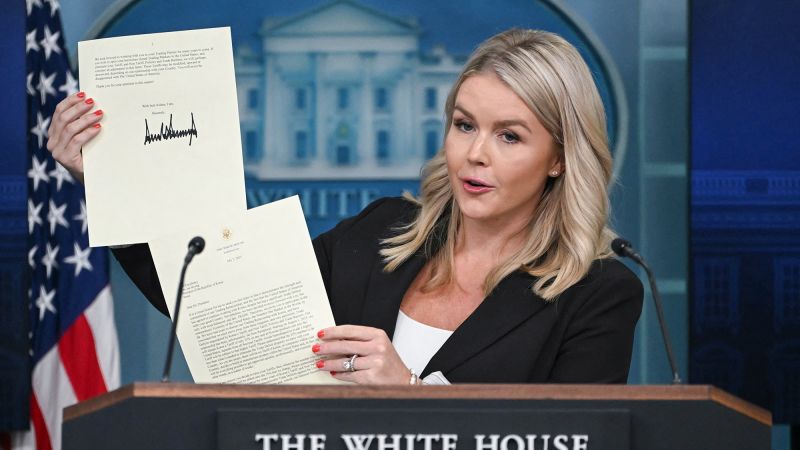Traders Eye US Stock Futures as New Catalysts Emerge

US Stock Futures Slip as Traders Eye New Catalysts
The US stock market has been on a rollercoaster ride this year, with record highs and sharp drops. As investors keep a close eye on new catalysts, US stock futures have slipped after a strong rally in European markets. The S&P 500 closed just shy of an all-time high, but the market remains cautious as it awaits further developments. With the ongoing trade tensions between the US and China, as well as global economic uncertainty, investors are carefully monitoring the market for any potential shifts. This pause in US stock futures highlights the importance of staying informed and adaptable in today's fast-paced financial landscape.
About the Organizations Mentioned
S&P 500
The S&P 500, officially known as the Standard & Poor’s 500, is a revered stock market index tracking the performance of 500 of the largest publicly traded companies in the United States[1]. Managed by S&P Dow Jones Indices—a joint venture majority-owned by S&P Global—the S&P 500 is widely recognized as a leading barometer of the U.S. stock market and, by extension, the broader economy[1][7]. It accounts for roughly 80% of the total market capitalization of U.S. public companies, with an aggregate value exceeding $57 trillion as of August 2025[1]. The index is weighted by market capitalization, meaning larger companies exert a greater influence on its movements[1][2]. Its top holdings include tech giants like Nvidia, Microsoft, Apple, and Alphabet, which together represent a significant portion of the index’s total value[1]. ## History and Evolution The S&P 500 traces its origins to 1923, when the Standard Statistics Company (later becoming Standard & Poor’s) launched an index of 233 companies[3]. In 1957, it expanded to include approximately 500 companies, formalizing the structure familiar today[3]. Over the decades, the index has evolved into a cornerstone of global finance, reflecting the dynamism of the U.S. economy and the rise of sectors like technology, healthcare, and consumer goods. ## Purpose and Impact The S&P 500 serves multiple critical roles: it is a benchmark for investment portfolios, a basis for passive index funds and ETFs, and a key input for economic forecasting tools like the Conference Board Leading Economic Index[1][6]. For companies, inclusion in the S&P 500 is prestigious and financially impactful, often triggering significant buying activity as funds tracking the index adjust their holdings[2]. For investors, the index offers a convenient, diversified exposure to the U.S. equity market through index funds and ETFs[4
US
The query seems to be about providing a summary of the organization "US," which could be interpreted as the United States government or a specific entity within it. However, without a clear reference to an "organization" named "US," I will provide a comprehensive overview of the United States government, focusing on its structure, history, achievements, current status, and notable aspects relevant to business and technology. ## Overview of the United States Government The United States government is a federal republic with a system divided into three branches: the legislative, executive, and judicial. This structure is designed to provide checks and balances on each branch. ## History The U.S. government was established in 1789 under the Constitution, which outlines the framework of the federal system. Over time, the government has evolved through numerous amendments and reforms, shaping policies and laws that impact various sectors, including business and technology. ## Key Achievements - **Economic Growth**: The U.S. has been a global leader in economic growth, innovation, and technological advancements, fostering a strong business environment. - **Technological Advancements**: The government has supported significant technological developments, such as the internet and space exploration, through funding and regulatory frameworks. - **Regulatory Frameworks**: Agencies like the Federal Trade Commission (FTC) and the Federal Communications Commission (FCC) play crucial roles in regulating industries and ensuring consumer protection. ## Current Status Currently, the U.S. government is engaged in various initiatives to address contemporary challenges such as climate change, cybersecurity, and healthcare reform. The government also continues to evolve its organizational structure, with ongoing discussions about the role of the executive branch, as seen in initiatives like Project 2025. ## Notable Aspects - **Project 2025**: This initiative, backed by the Heritage Foundation, aims to restructure the federal government to align with conservative ideals, potentially impacting civil rights and executive branch powers. - **Standards and Regulations**: The U.S. Standards Strategy,
China
China is not an organization but a sovereign nation and the world’s second-largest economy, playing a pivotal role in global business and technology. Since initiating economic reforms in 1978, China has transformed from a largely agrarian society into an upper-middle-income country with an average GDP growth of over 9 percent per year for decades, lifting nearly 800 million people out of poverty[2]. The country’s economic model initially focused on investment and export-oriented manufacturing but is now shifting towards higher-value services, domestic consumption, and low-carbon growth to address social, environmental, and structural challenges[2]. China’s government heavily directs industrial policy, promoting domestic innovation and technological self-reliance through plans like “Made in China 2025” and the 14th Five Year Plan (2021-2025). These initiatives target advanced technology sectors such as robotics, aerospace, new energy vehicles, biopharmaceuticals, and high-tech manufacturing, aiming to replace foreign technologies with domestic alternatives and expand China’s global market presence[3]. This industrial strategy combines state subsidies, preferential policies, and strict market access controls for foreign firms, shaping a competitive environment favoring national champions[3]. Despite solid economic growth—real GDP grew by 5.4% year-on-year in early 2025—China faces headwinds including demographic shifts, slowing productivity, a cooling property market, and global trade uncertainties. Growth is projected to moderate to around 4.5% in 2025 and 4.0% in 2026, with fiscal stimulus helping to offset some challenges[1][3][6]. Externally, China remains a major global exporter, with exports outpacing GDP growth in 2025[6]. Notably, China’s governance under President Xi Jinping has tightened control over civil society, media, and minority regions, drawing international scrutiny for human rights issues and repression, especially of Uyghurs and Tibetans[4][9]. Meanwhile, Chin















